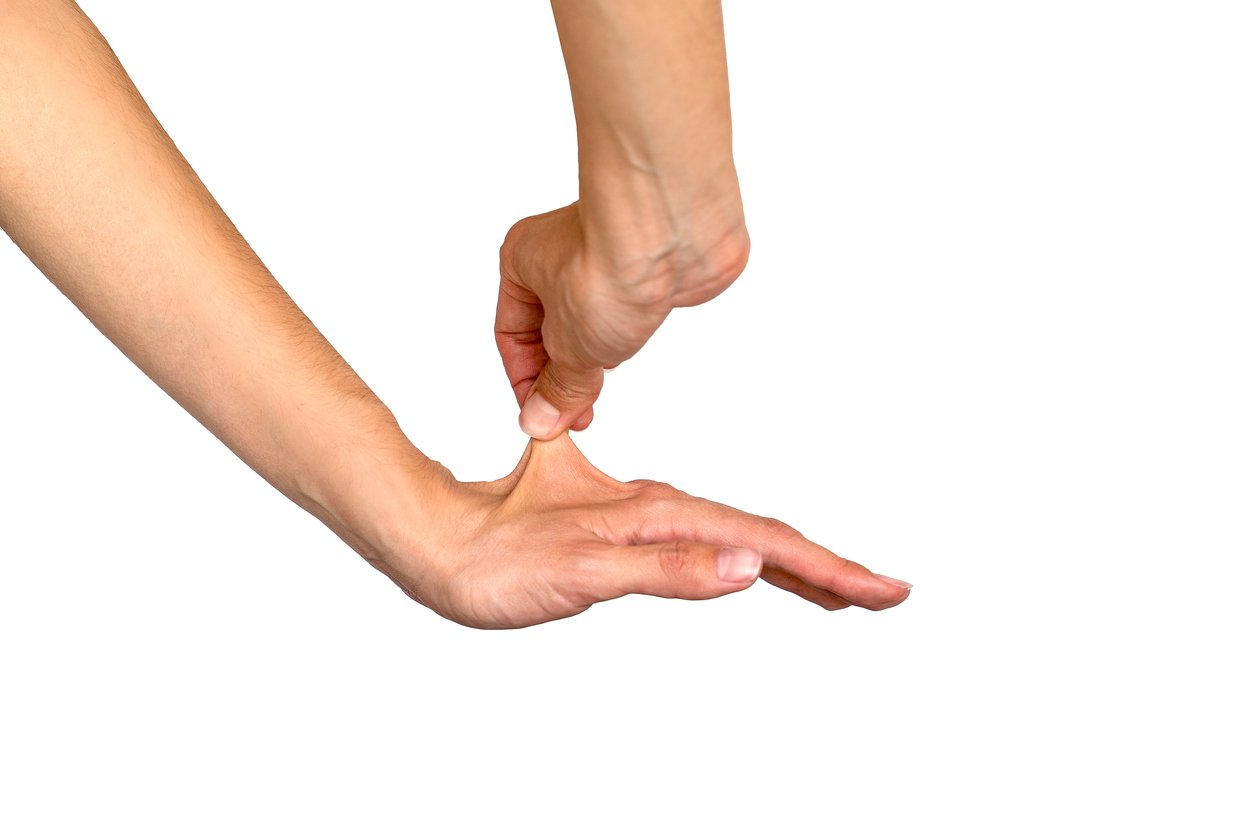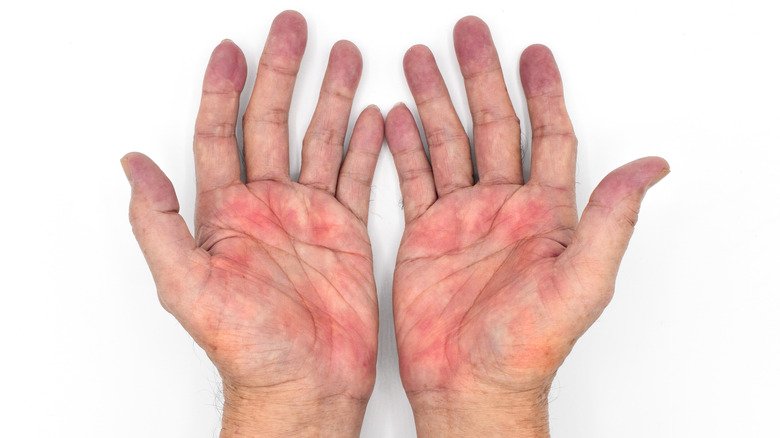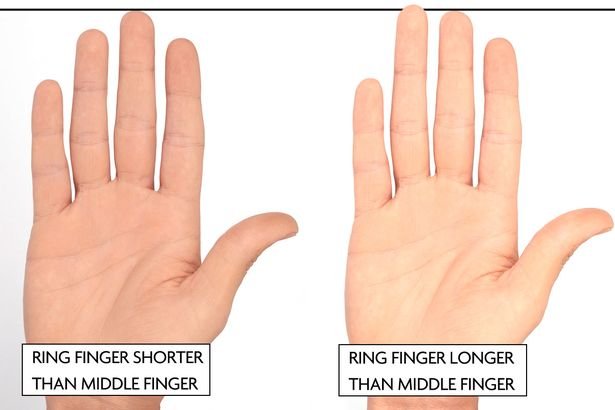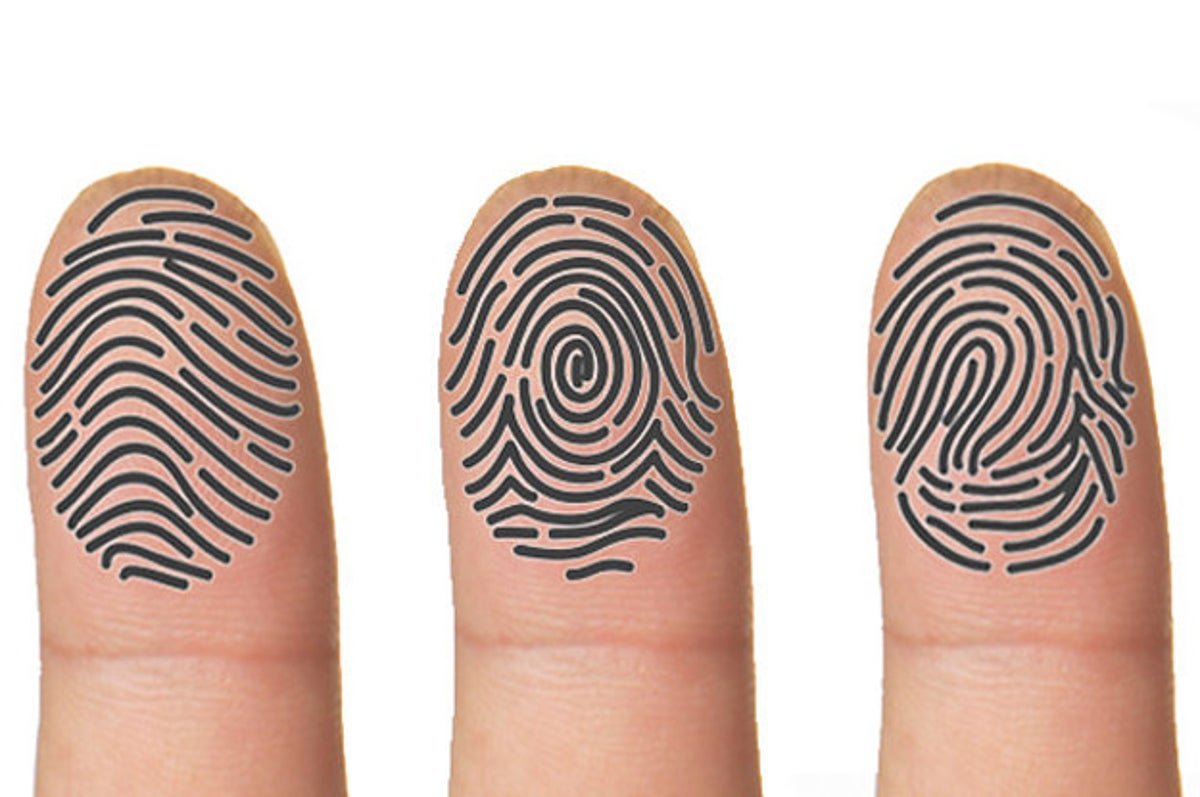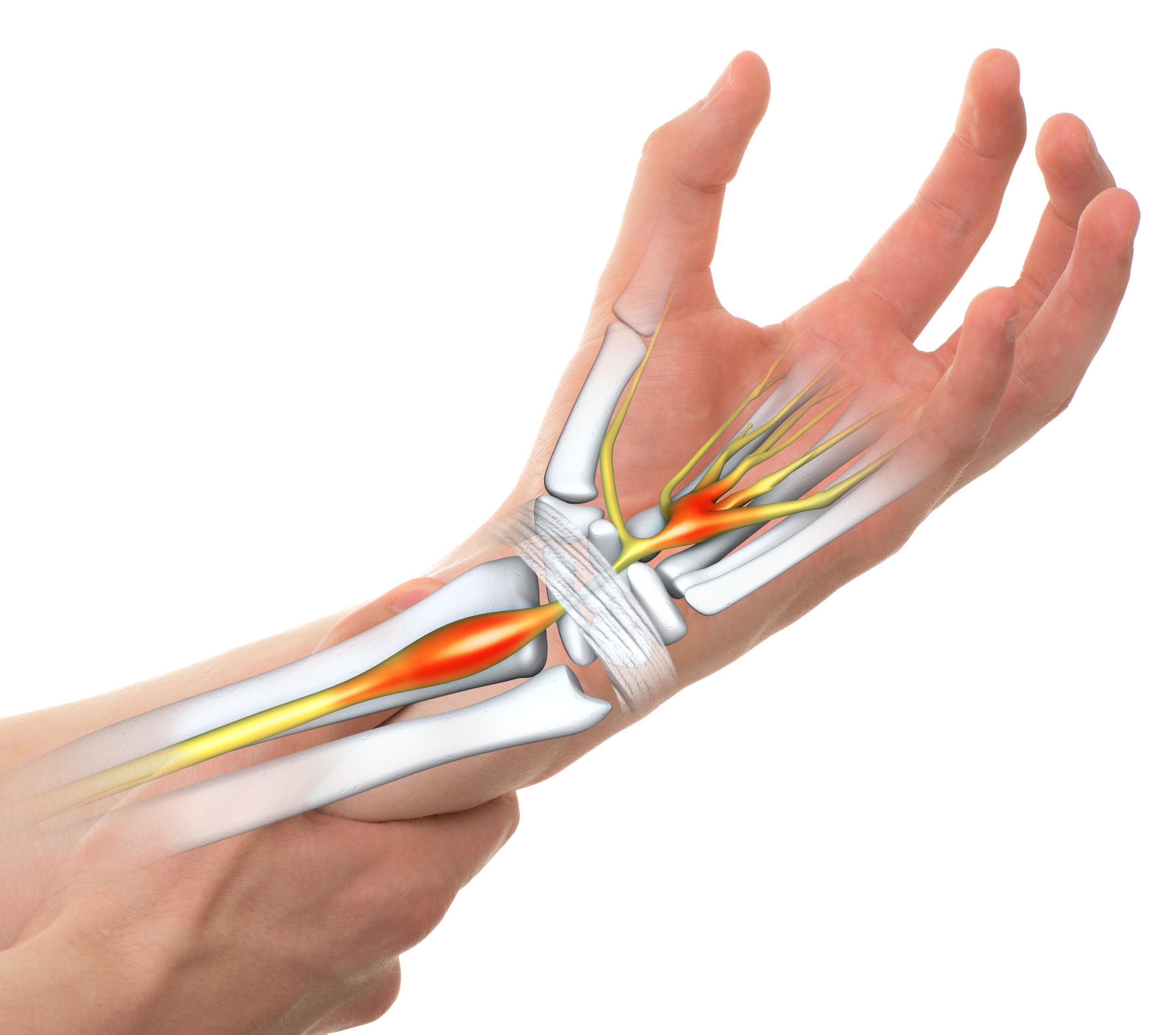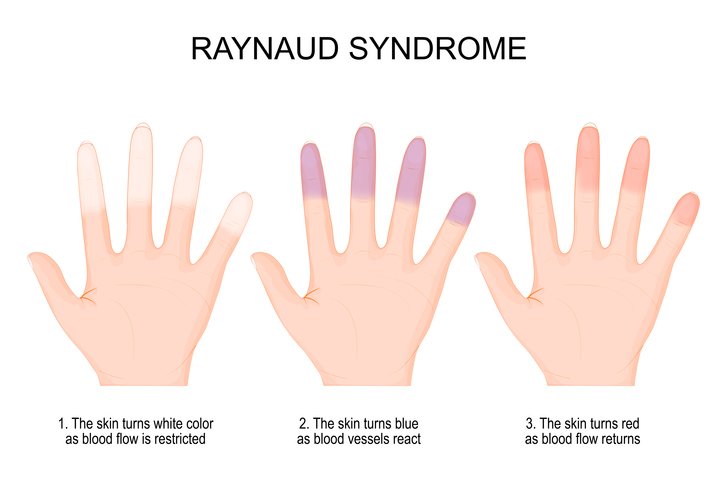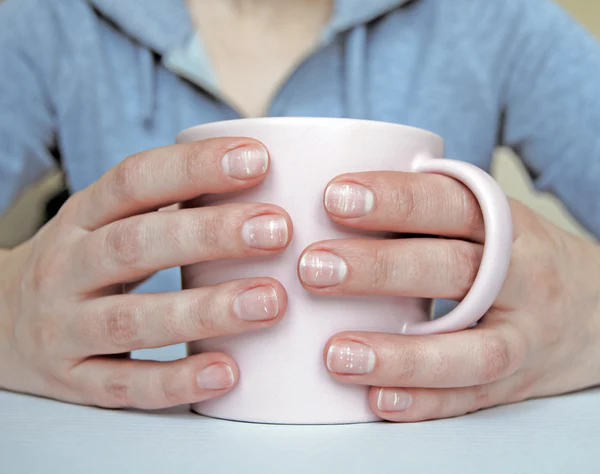Your Hands; The Unlikely Health Detectives
Have you ever taken a moment to look at your hands? I mean, really look at them? You might be surprised to know that your hands, specifically your fingers, can tell a fascinating story about your health. Yes, you read that right! Your hands are not just tools to interact with the world; they are also a window into your well-being and should be part of that initial evaluation of your physiotherapist when you enter the office with a mysterious ache or pain.
Let's embark on an enlightening journey to discover what your hands might be saying about your health.
Hypermobility Spectrum Disorder: The Flexibility Factor
Hypermobility Spectrum Disorder (HSD) is a group of conditions that make your joints more flexible than normal. It's like your joints have taken up gymnastics! One of the most well-known conditions within the HSD is Ehlers-Danlos Syndrome (1). This group of disorders affects your connective tissues — the "glue" that helps hold your body together. While there are several types of EDS, the hypermobile type (hEDS) is the most common. People with hEDS often have symptoms like loose joints, stretchy skin, and a high risk of joint dislocations and sprains.
But here's the catch: not everyone with joint hypermobility has HSD or EDS. It's a spectrum, remember? On one end, you have people who are just naturally flexible. On the other end, you have conditions like HSD and EDS. And in between, you have a whole range of experiences. So, if you find your skin stretching more than usual, or your joints bending back further than others, it could be a sign of HSD. Don't ignore persistent joint pain or dislocations, fatigue, and skin problems - these could be your body's way of asking for help.
Red and Orange Palms: A Colorful Clue
Did you know the color of your palms can be a health barometer? First, let's talk about red palms, also known as palmar erythema. If you're thinking, "Wait, isn't erythema a fancy term for redness?" You're absolutely right! But what does it mean when this redness shows up on your palms?
Well, red palms can be a sign of several conditions (2). One of the most common is liver disease. Now, you might be thinking, "What do my palms have to do with my liver?" It's a valid question! The liver plays a crucial role in your body, including the regulation of blood flow. When the liver isn't functioning properly, it can lead to an excess of circulating hormones, causing blood vessels in your palms to dilate and give them a reddish appearance.
But liver disease isn't the only possible cause. Red palms can also be a sign of rheumatoid arthritis, thyroid disease, or even pregnancy. So, if you notice your palms turning red, it's definitely worth discussing with your healthcare professional.
Now, let's shift gears and talk about orange palms. If you've been munching on a lot of carrots or pumpkins, you might have a harmless condition called carotenemia (3). This happens when you consume high amounts of beta-carotene, a pigment found in many orange and yellow fruits and vegetables. Your body converts beta-carotene into vitamin A, but when you consume more than your body can convert, the excess gets stored in your skin, leading to an orange hue.
While carotenemia is generally harmless, it's worth noting that an orange tint to your skin can also be a sign of hypothyroidism, a condition where your thyroid gland doesn't produce enough hormones. So, if you haven't been on a carrot binge and your palms are looking a bit orange, it might be time to check in with your healthcare professional.
Finger Length: The Long and Short of It
Have you ever compared your index and ring fingers? It might seem like a quirky thing to do, but the length of these fingers can offer intriguing insights into your health. Research suggests that the ratio of these two fingers, known as the 2D:4D ratio, is influenced by the amount of testosterone and estrogen we are exposed to in the womb.
In men, a lower 2D:4D ratio, where the ring finger is longer than the index finger, might indicate higher prenatal testosterone levels. This has been linked to a higher risk of developing conditions like prostate cancer (4). On the other hand, women typically have a higher 2D:4D ratio, with the index finger being the same length or longer than the ring finger (5). Some studies suggest this could be associated with a higher risk of breast cancer (6).
But before you start fretting about your finger lengths, remember that these are just potential indicators. They are not definitive predictors of your health. So, while your fingers might be telling an interesting tale, it's always best to consult a healthcare professional for a complete picture of your health.
Psoriatic Nails: More than Skin Deep
When you think of psoriasis, you probably think of red, itchy patches on the skin. But did you know that up to half of people with psoriasis also experience changes in their nails? This condition, known as psoriatic nails, can manifest in several ways (7).
You might notice tiny dents or pits on the surface of your nails, almost like they've been poked with a pin. Or perhaps your nails have become discolored, taking on a yellowish-red hue. In some cases, the nail might start to separate from the nail bed, or you might see a chalk-like material under your nail.
These changes can be more than just cosmetic concerns. They can impact your ability to use your hands for everyday tasks. Plus, they can be a sign that psoriasis is affecting other parts of your body, like your joints. So, if your nails are starting to look like a moonscape, it's worth seeking medical advice. Remember, your nails are not just for decoration; they're a window into your health.
Clubbing Fingers: The Shape Shifters
Clubbing is a condition where the ends of your fingers enlarge and your nails curve around the fingertips. It might look like your fingers are taking on a bulbous, club-like appearance. But what does this mean for your health?
Clubbing can be a sign of low oxygen levels in your blood, which can be associated with various diseases, particularly those affecting the heart and lungs (8). Conditions like lung cancer, cystic fibrosis, and heart disease can all lead to clubbing.
But how does this happen? The exact mechanism is still a mystery, but it's thought that fluid might accumulate in the soft tissues at the ends of the fingers, causing them to swell and the nails to curve.
So, if you notice your fingers starting to resemble clubs, don't just brush it off as a strange quirk. It might be your body's way of telling you that something more serious is going on. Always consult a healthcare professional if you notice significant changes in your body.
Fingerprints: Your Unique Health Identifier
Isn't it fascinating to think that the unique patterns on your fingertips could potentially hold clues about your health? Let's delve a little deeper into this. You might have noticed that your fingerprints are made up of different patterns - loops, arches, and whorls. Now, imagine if these patterns could whisper secrets about your health.
A field of research has suggested a possible link between the whorl fingerprint pattern and an increased risk of high blood pressure, also known as hypertension (9). Picture this: you're looking at your fingerprints under a magnifying glass, and you notice a pattern that spirals around, much like a rose. That's a whorl.
Now, this doesn't mean you should rush to your healthcare professional if you spot a whorl on your fingertip. Fingerprints are not diagnostic tools for hypertension. The diagnosis is primarily based on accurate blood pressure measurements using standardized techniques. But isn't it intriguing to think that your unique fingerprint could be a part of the larger story of your health?
Lycopenemia: The Tomato Tango
Have you ever eaten so many tomatoes that your skin turned a shade of orange? Sounds like a scene from a cartoon, right? But this can actually happen! It's called lycopenemia (10).
Lycopene is a pigment that gives tomatoes and certain other fruits their vibrant red color. When you consume these in large amounts, the excess lycopene can tint your skin orange, including your palms. It's as if your body is saying, "Okay, I think we've had enough tomatoes for now!"
While lycopenemia is harmless and usually resolves once you cut back on lycopene-rich foods, it's a colorful reminder of the importance of a balanced diet. So, next time you're enjoying a tomato-rich dish, remember the tomato tango!
Carpal Tunnel Syndrome: The Wrist Watch
In the digital age, our hands and fingers are constantly dancing across keyboards and screens. But what happens when the music plays on for too long? Enter Carpal Tunnel Syndrome (CTS).
CTS is like a repetitive strain symphony that plays out in your hand. It happens when the median nerve, which runs from your forearm into your hand, gets compressed at the wrist. This can lead to symptoms like numbness, tingling, or pain in your hand and fingers.
If you're experiencing these symptoms, especially after repetitive tasks like typing, it's important to listen to your body. Regular breaks, wrist exercises, and ergonomic workstations can help keep the symphony in harmony.
Raynaud's Phenomenon: The Cold Response
Raynaud's phenomenon is a condition where your body's response to cold or stress goes into overdrive. The small blood vessels in your fingers narrow down, limiting blood circulation. It's as if your body is saying, "It's cold out there, let's keep the blood close to the heart!"
If you notice your fingers reacting dramatically to the cold or stress, it might be more than just a quirky trait. It's always a good idea to consult a healthcare professional to rule out any underlying conditions.
Hand Joints: The Arthritis Alarm
Your hand joints are like silent storytellers, narrating tales of your health through subtle signs. Pain, swelling, or stiffness in your hand joints can be a sign of various conditions, from osteoarthritis to rheumatoid arthritis.
If your hands are giving you a hard time, don't just brush it off as 'wear and tear'. It's your body's way of asking for attention. It might be time to see a rheumatologist, a healthcare professional who specializes in joint conditions.
Remember, your hands do so much for you. They help you interact with the world, express yourself, and even take care of others. It's only fair that you take care of them too. So, next time you notice something unusual about your hands, don't ignore it.
Splinter Hemorrhages: The Under-Nail Indicator
Splinter hemorrhages are tiny blood spots that appear under your nails. They can be caused by minor trauma to the nail, but can also be a sign of conditions such as endocarditis (an infection of the heart's inner lining) or vasculitis (inflammation of the blood vessels). If you notice these spots and can't remember injuring your nail, it's a good idea to seek medical advice.
Leukonychia: The White Spot Warning
Leukonychia is a condition where white spots or lines appear on your nails. This is often caused by minor injuries to the nail, but can also be a sign of zinc or protein deficiency, or conditions such as kidney disease. If you notice these changes, it's worth discussing this with your healthcare professional.
Have you ever noticed those tiny white spots on your nails and wondered what they could possibly mean? This condition, known as leukonychia, often sparks curiosity and sometimes even concern.
Most often, these spots are caused by minor injuries to the nail, but can also be a sign of zinc or protein deficiency, or conditions such as kidney disease. While leukonychia is usually harmless, it's always better to be safe than sorry. If you notice these changes, it's worth discussing this with your healthcare professional.
Spoon Nails: The Iron-Deficiency Indicator
Spoon nails (koilonychia) are soft nails that look scooped out. The depression usually is large enough to hold a drop of liquid. Often, spoon nails are a sign of iron-deficiency anemia or a liver condition known as hemochromatosis, in which your body absorbs too much iron from the food you eat. Spoon nails can also be associated with heart disease and hypothyroidism.
Your hands can tell a captivating tale about your health. From the length of your fingers to the color of your palms, each characteristic holds a clue. However, remember that these signs are just potential indicators and not definitive diagnoses. If you notice any changes or symptoms, it's always best to consult a healthcare professional. After all, when it comes to your health, you hold your well-being in your own hands. So, the next time you look at your hands, ask yourself: What story are they telling me today?
References
Czaprowski D, Kotwicki T, Pawłowska P, Stoliński L. Joint hypermobility in children with idiopathic scoliosis: SOSORT award 2011 winner. Scoliosis. 2011 Oct 7;6:22. doi: 10.1186/1748-7161-6-22. PMID: 21981906; PMCID: PMC3204294.
George Shand, Hon A/Prof Amanda Oakley, (2015). Palmar Erythema.https://dermnetnz.org/topics/palmar-erythema#
Maharshak, N., Shapiro, J. and Trau, H. (2003), Carotenoderma – a review of the current literature. International Journal of Dermatology, 42: 178-181. https://doi.org/10.1046/j.1365-4362.2003.01657.x
Rahman AA, Lophatananon A, Stewart-Brown S, Harriss D, Anderson J, Parker T, Easton D, Kote-Jarai Z, Pocock R, Dearnaley D, Guy M, O'Brien L, Wilkinson RA, Hall AL, Sawyer E, Page E, Liu JF; UK Genetic Prostate Cancer Study Collaborators; British Association of Urological Surgeons' Section of Oncology; Eeles RA, Muir K. Hand pattern indicates prostate cancer risk. Br J Cancer. 2011 Jan 4;104(1):175-7. doi: 10.1038/sj.bjc.6605986. Epub 2010 Nov 30. PMID: 21119657; PMCID: PMC3039824.
Paul SN, Kato BS, Hunkin JL, et al. The Big Finger: the second to fourth digit ratio is a predictor of sporting ability in women. British Journal of Sports Medicine 2006;40:981-983.
Muller DC, Baglietto L, Manning JT, McLean C, Hopper JL, English DR, Giles GG, Severi G. Second to fourth digit ratio (2D:4D), breast cancer risk factors, and breast cancer risk: a prospective cohort study. Br J Cancer. 2012 Oct 23;107(9):1631-6. doi: 10.1038/bjc.2012.418. Epub 2012 Sep 18. PMID: 22990654; PMCID: PMC3493764.
Knut M. Wittkowski, Craig Leonardi, Alice Gottlieb, et al. Clinical Symptoms of Skin, Nails, and Joints Manifest Independently in Patients with Concomitant Psoriasis and Psoriatic Arthritis
Hervé P, Lebrec D, Brenot F, Simonneau G, Humbert M, Sitbon O, Duroux P. Pulmonary vascular disorders in portal hypertension. Eur Respir J. 1998 May;11(5):1153-66. doi: 10.1183/09031936.98.11051153. PMID: 9648972.
Chakravathy P G, Shirali A, Chowta KN, Ramapuram JT, Madi D, Raj Singh Chouhan R. A "Handy" tool for hypertension prediction: Dermatoglyphics. Indian Heart J. 2018 Dec;70 Suppl 3(Suppl 3):S116-S119. doi: 10.1016/j.ihj.2018.07.007. Epub 2018 Jul 24. PMID: 30595242; PMCID: PMC6309295.
Jawaid A. Shaw, Meghashyam Koti. Orange discoloration of the palms. CMAJ Apr 2009, 180 (8) 895; DOI: 10.1503/cmaj.071335


